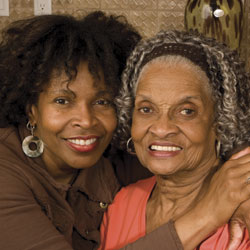
Breast cancer is not the number-one killer of women. It is, however, the number-one occurring cancer in women, affecting one out of eight women in their lifetimes. It is estimated that there will be 182,460 cases of breast cancer in 2008.
Numerous studies have demonstrated that early detection saves lives and increases treatment options. The recent declines in breast cancer mortality among women have been attributed to a combination of early detection and improvements in treatment according to the American Cancer Society (ACS). Mammography is highly accurate and, although it is not perfect, it will detect approximately 80 to 90 percent of breast cancers in women without symptoms.
The rationale behind securing a screening mammogram is that early diagnosis of breast cancer can lead to early effective treatment. Mammography does not prevent breast cancer, but it is the best tool for early detection. Screening for breast cancer aims to identify people who might have the disease by testing a group of people for signs of it. The ACS recommends mammograms to begin yearly starting at age 40. If one has a family history of breast cancer, mammograms should begin earlier based on ACS guidelines, or 10 years prior to the time the family member was diagnosed.
One of the requirements of a successful mammogram screening program is to achieve a high participation rate, which can be related to methods of invitation. There are different strategies aimed at improving the rate of women’s participation in screening mammograms. Some of these methods include mailed educational material, reminder letters, phone calls, training activities such as teaching breast self-examinations and the newer approach—mammogram parties.
The mammogram party has come into being as a way to encourage women to come together with family and/or friends to have their mammograms at the same time. The mammogram party offers built-in support for every woman in that group. In the event that one woman has to return for more views or a second look, she already has a support system in place.
The mammogram party has a hostess who can bring up to nine of her friends and/or family members for a total of 10. The party is arranged with a breast center and invitations can be sent by the hostess to her friends asking them to join her.
There is also the opportunity to have a theme for the party, gift bags and reminder cards. Refreshments can be provided by the hostess and games or cards can even be played. The idea is to have fun while doing something very beneficial for women. Breast health education should always be provided at the party to inform and update women about breast self-care, i.e. frequency of mammograms, what to do if you find a lump, etc.
It is very important to continue to explore the efforts of specific actions, such as mammogram parties, in order to bring women in for that very important screening mammogram, specifically those groups who are less prone to attend or who have never had mammograms. Ethnic and cultural considerations can be planned into the party. Evidence from recruitment activities such as mammogram parties and whether it affects breast cancer screening should be investigated further. In the near future, we want to be able to ALWAYS diagnose this disease at the earliest stage for the very best treatment possible. TPW
